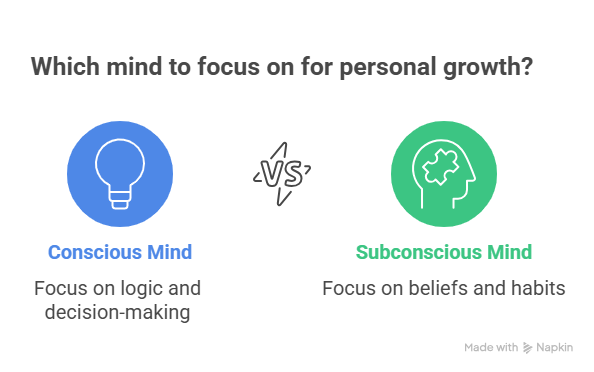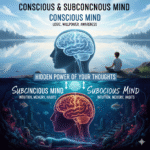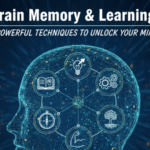This document explores the fascinating realm of the conscious and subconscious mind, delving into their distinct roles, interactions, and the profound influence they exert on our thoughts, behaviors, and overall lives. Understanding the dynamics between these two mental powerhouses is key to unlocking personal growth, overcoming limiting beliefs, and harnessing the full potential of our minds.
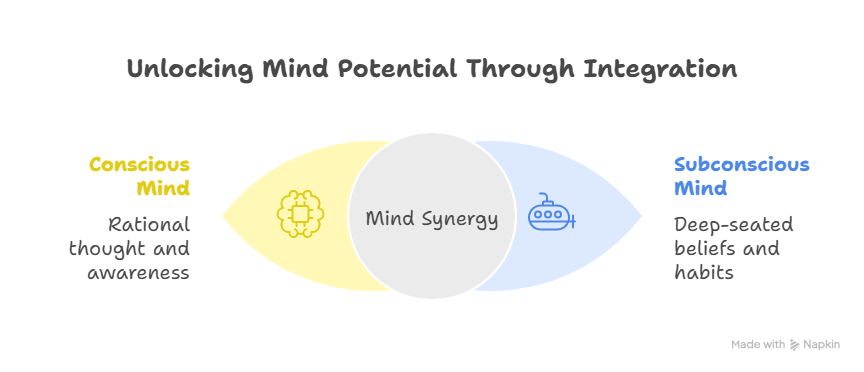
Introduction to the Conscious and Subconscious Mind
Our minds are often likened to icebergs, with only a small portion visible above the surface (the conscious mind) and a vast, hidden mass submerged below (the subconscious mind). While the conscious mind is responsible for our immediate awareness, logical reasoning, and decision-making, the subconscious mind operates behind the scenes, storing our memories, beliefs, habits, and emotions.
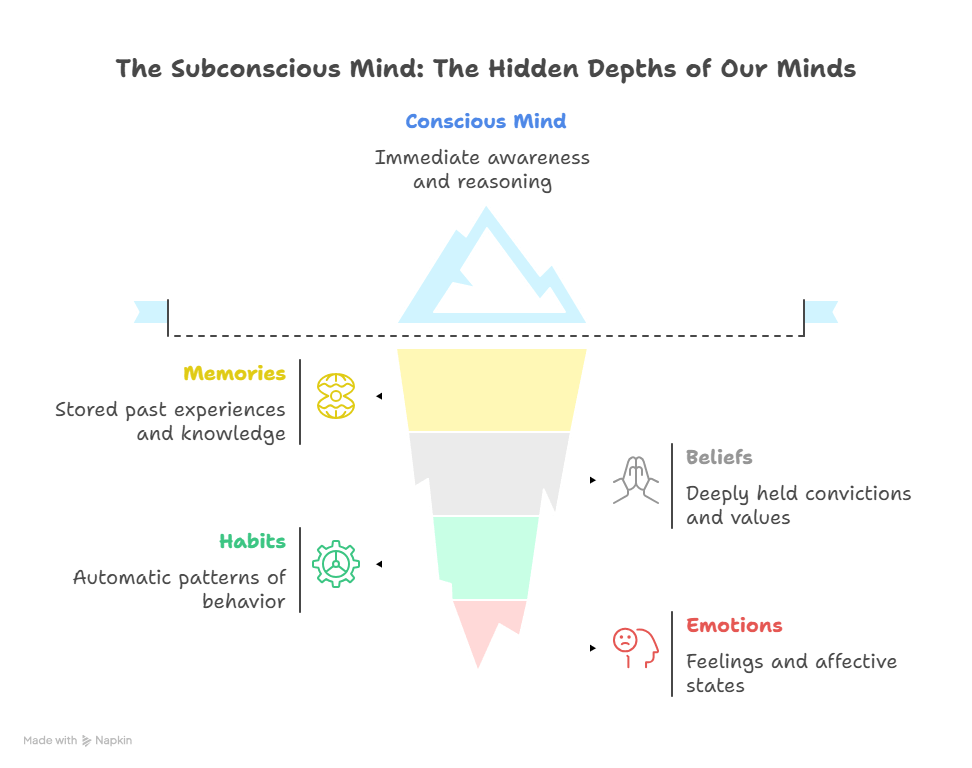
The Conscious Mind: The Captain of the Ship
The conscious mind is the part of our mind that we are directly aware of. It’s the active thinker, the decision-maker, and the problem-solver. Its key functions include:
- Logical Reasoning: Analyzing information, making judgments, and drawing conclusions.
- Decision-Making: Evaluating options and choosing a course of action.
- Short-Term Memory: Holding information temporarily for immediate use.
- Willpower: Exerting conscious effort to control thoughts and behaviors.
- Focus and Attention: Directing mental energy towards specific tasks or stimuli.
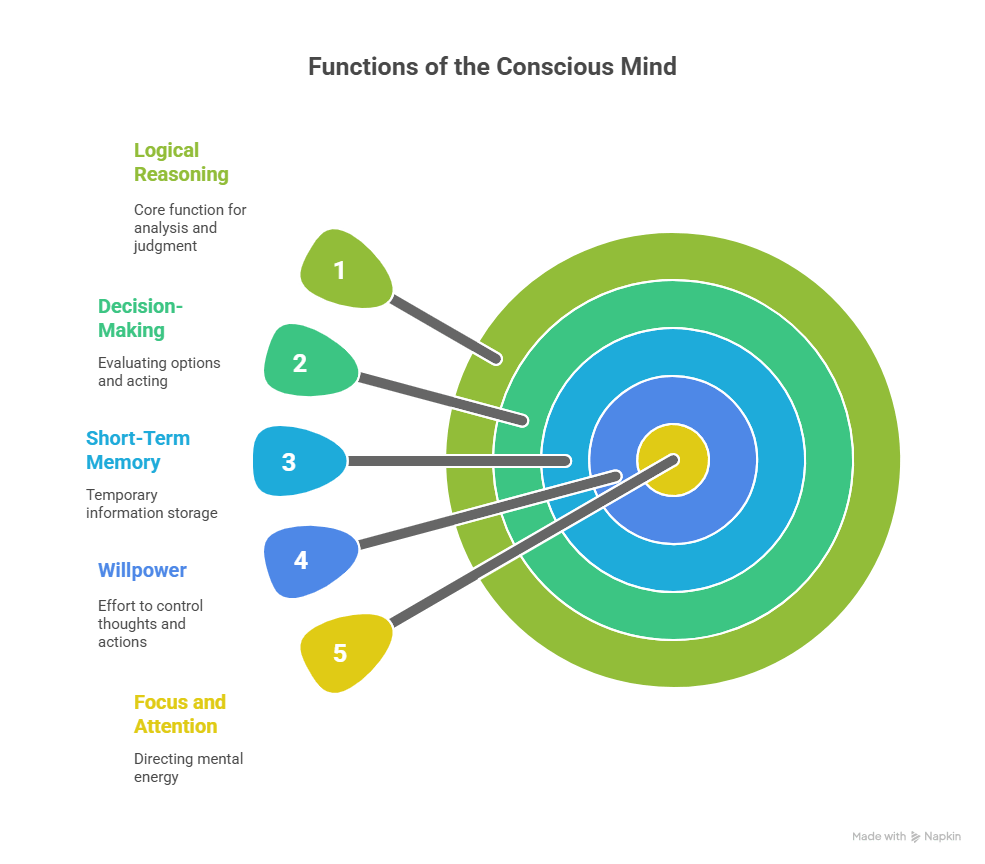
The conscious mind is limited in its processing capacity. It can only focus on a small number of things at once. Think of it as the captain of a ship, giving orders and navigating the vessel. However, the captain relies on the crew (the subconscious mind) to execute those orders and keep the ship running smoothly.
The Subconscious Mind: The Engine Room
The subconscious mind is a vast reservoir of information and programming that operates beneath our conscious awareness. It’s responsible for:
- Long-Term Memory: Storing past experiences, knowledge, and skills.
- Habits and Automatic Behaviors: Executing routine actions without conscious thought.
- Emotions and Feelings: Generating emotional responses based on past experiences and beliefs.
- Beliefs and Values: Holding deeply ingrained convictions that shape our perceptions and behaviors.
- Body Functions: Regulating vital processes like breathing, heart rate, and digestion.
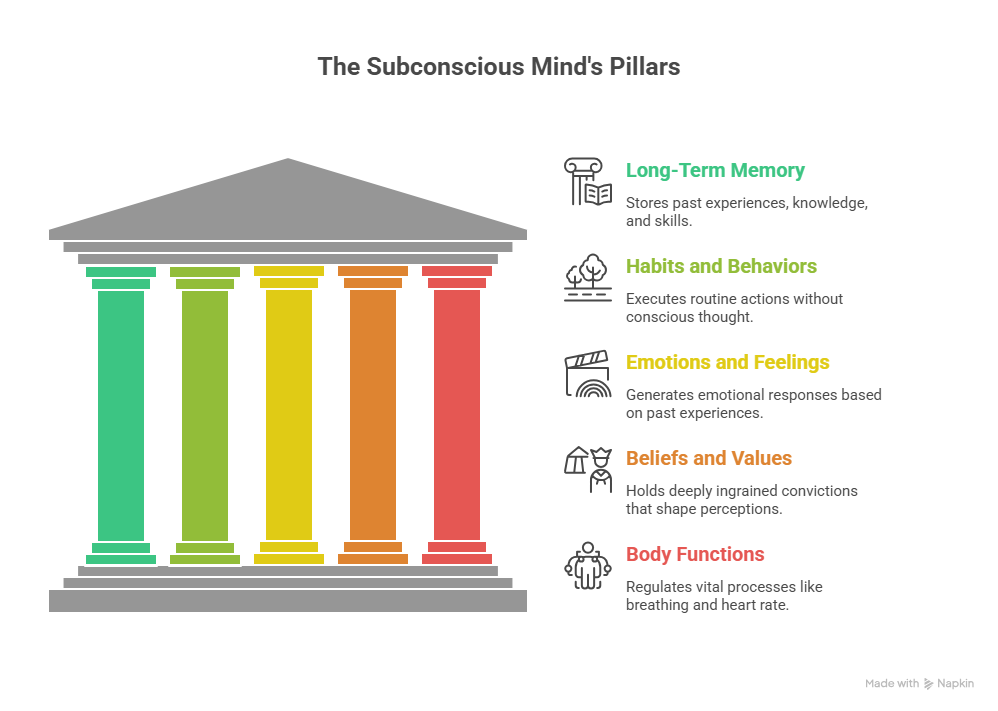
The subconscious mind is incredibly powerful and influential. It processes information much faster than the conscious mind and can handle multiple tasks simultaneously. It operates 24/7, even while we sleep. It’s the engine room of the ship, constantly working to keep us alive and functioning.
The Interplay Between Conscious and Subconscious
The conscious and subconscious minds are not separate entities but rather interconnected parts of a single system. They constantly communicate and influence each other.
- Conscious Input to Subconscious: The conscious mind can influence the subconscious by repeatedly exposing it to new information, ideas, or experiences. This is how we learn new skills, form new habits, and change our beliefs.
- Subconscious Influence on Conscious: The subconscious mind influences the conscious mind by shaping our perceptions, emotions, and behaviors. Our subconscious beliefs and habits can either support or sabotage our conscious goals.
For example, if you consciously decide to learn a new language, you are using your conscious mind to study grammar and vocabulary. However, your subconscious mind will play a crucial role in your success. If you have a subconscious belief that you are not good at languages, it will create resistance and make learning more difficult. On the other hand, if you have a subconscious belief that you are capable and intelligent, it will support your efforts and accelerate your progress.
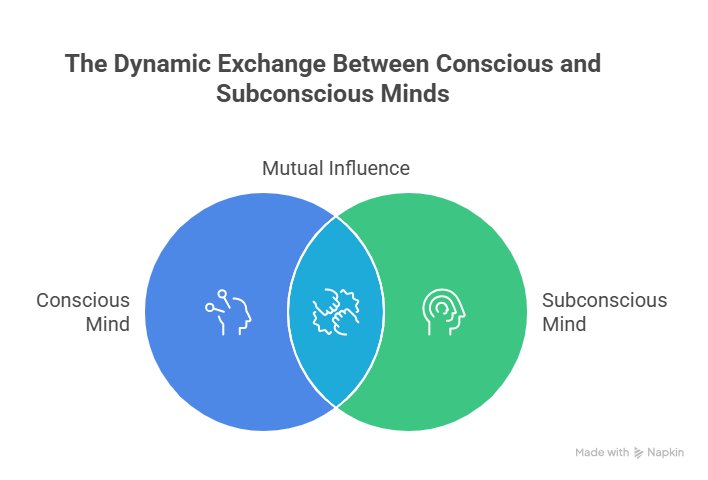
Harnessing the Power of the Subconscious Mind
Understanding how the subconscious mind works allows us to harness its power for personal growth and transformation. Here are some techniques for influencing the subconscious:
- Repetition and Affirmations: Repeating positive statements or affirmations can help reprogram negative beliefs and instill new, empowering ones.
- Visualization: Creating vivid mental images of desired outcomes can help the subconscious mind accept them as reality.
- Hypnosis: A state of heightened suggestibility that allows direct access to the subconscious mind.
- Meditation: A practice that quiets the conscious mind and allows for deeper connection with the subconscious.
- Emotional Release Techniques: Techniques like EFT (Emotional Freedom Techniques) can help release negative emotions and traumas stored in the subconscious.
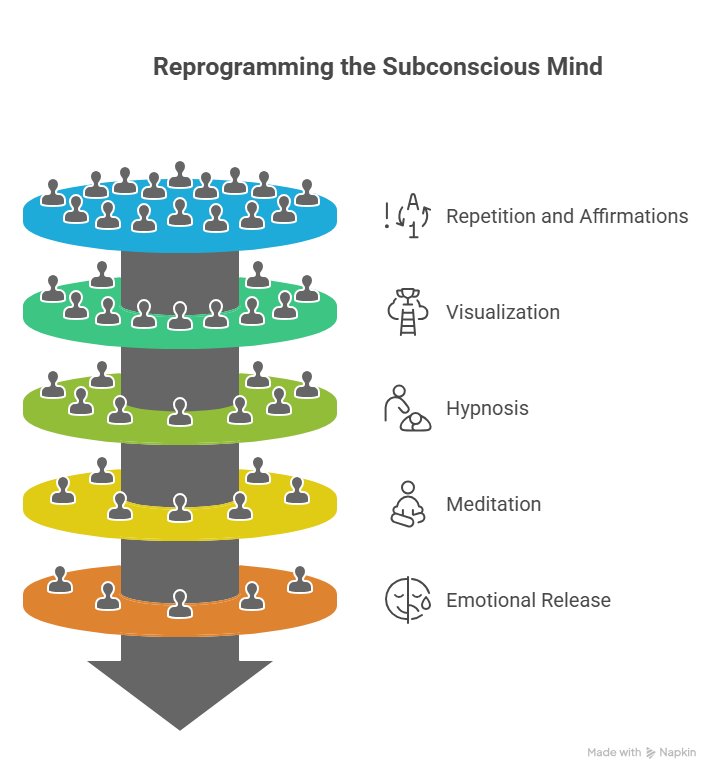
Overcoming Limiting Beliefs
Limiting beliefs are negative or self-defeating thoughts that are deeply ingrained in the subconscious mind. They can hold us back from achieving our goals and living fulfilling lives. Identifying and challenging these beliefs is crucial for personal growth.
- Identify Limiting Beliefs: Pay attention to your thoughts and feelings. What negative thoughts do you frequently have about yourself, your abilities, or your potential?
- Challenge the Beliefs: Ask yourself if the beliefs are actually true. Are they based on facts or assumptions? What evidence contradicts the beliefs?
- Replace with Empowering Beliefs: Create new, positive beliefs that support your goals and aspirations.
- Reinforce the New Beliefs: Use affirmations, visualization, and other techniques to reinforce the new beliefs in your subconscious mind.
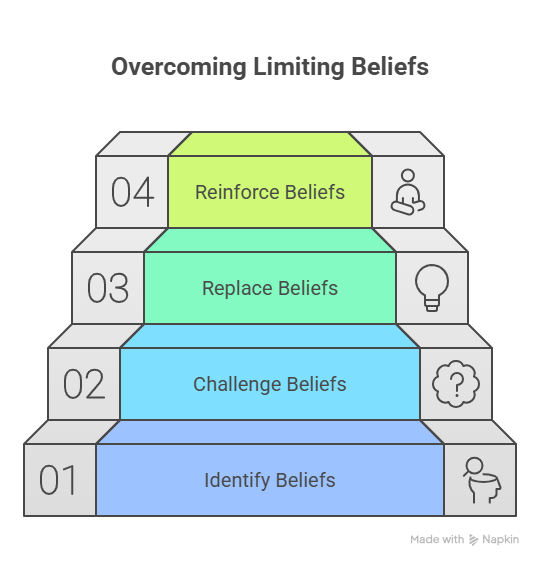
Conclusion
The conscious and subconscious minds are two powerful forces that shape our lives. By understanding their distinct roles and interactions, we can learn to harness the power of our minds to achieve our goals, overcome limiting beliefs, and live more fulfilling lives. The journey of self-discovery and personal growth begins with understanding the hidden power within.
